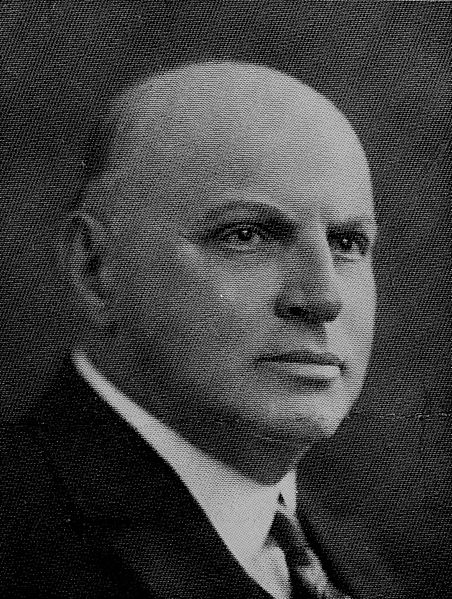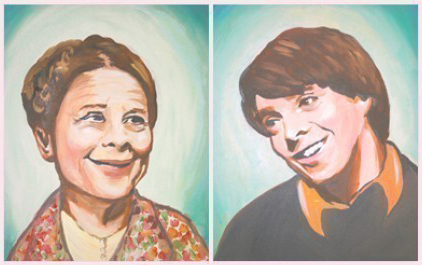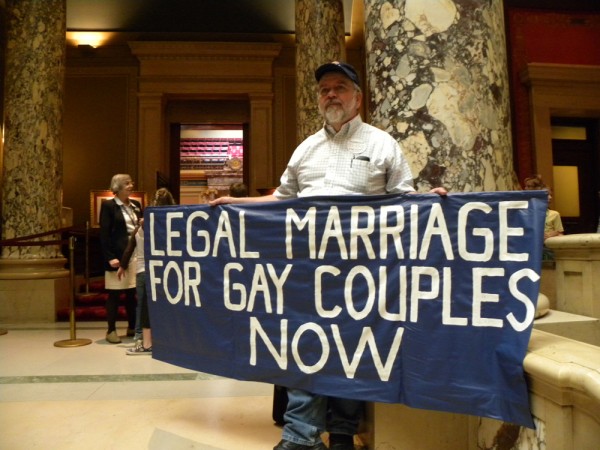Chapter 13. Aging and the Elderly
13.2 The Process of Aging
As human beings grow older, they go through different phases or stages of life. It is helpful to understand aging in the context of these phases as aging is not simply a physiological process. A life course is the period from birth to death, including a sequence of predictable life events such as physical maturation and the succession of age-related roles: child, adolescent, adult, parent, senior, etc. At each point in life, as an individual sheds previous roles and assumes new ones, new institutions or situations are involved, which require both learning and a revised self-definition. You are no longer a toddler; you are in kindergarten now! You are no longer a child; you are in high school now! You are no longer a student; you have a job now! You are no longer single; you are going to have a child now! You are no longer in mid-life; it is time to retire now! Each phase comes with different responsibilities and expectations, which of course vary by individual and culture. The fact that age-related roles and identities vary according to social determinations mean that the process of aging is much more significantly a social phenomenon than a biological phenomenon.
Children love to play and learn, looking forward to becoming preteens. As preteens begin to test their independence, they are eager to become teenagers. Teenagers anticipate the promises and challenges of adulthood. Adults become focused on creating families, building careers, and experiencing the world as an independent person. Finally, many adults look forward to old age as a wonderful time to enjoy life without as much pressure from work and family life. In old age, grandparenthood can provide many of the joys of parenthood without all the hard work that parenthood entails. As work responsibilities abate, old age may be a time to explore hobbies and activities that there was no time for earlier in life. But for other people, old age is not a phase looked forward to. Some people fear old age and do anything to “avoid” it, seeking medical and cosmetic fixes for the natural effects of age. These differing views on the life course are the result of the cultural values and norms into which people are socialized.
Through the phases of the life course, dependence and independence levels change. At birth, newborns are dependent on caregivers for everything. As babies become toddlers and toddlers become adolescents and then teenagers, they assert their independence more and more. Gradually, children are considered adults, responsible for their own lives, although the point at which this occurs is widely variable among individuals, families, and cultures.
As Riley (1978) notes, the process of aging is a lifelong process and entails maturation and change on physical, psychological, and social levels. Age, much like race, class, and gender, is a hierarchy in which some categories are more highly valued than others. For example, while many children look forward to gaining independence, Packer and Chasteen (2006) suggest that even in children, age prejudice leads both society and the young to view aging in a negative light. This, in turn, can lead to a widespread segregation between the old and the young at the institutional, societal, and cultural levels (Hagestad and Uhlenberg, 2006).
Making Connections: Classical Sociologists
Dr. Ignatz Nascher and the Birth of Geriatrics

In the early 1900s, an Austrian physician named Dr. Ignatz Nascher coined the term geriatrics, a medical specialty focusing on the elderly. The word combines two Greek words: geron (old man) and iatrikos (medical treatment). Nascher based his work on what he observed as a young medical student, when he saw many acutely ill elderly people who were diagnosed simply as “being old.” There was nothing medicine could do, his professors declared, about the syndrome of “old age.”
Nascher refused to accept this dismissive view, seeing it as medical neglect. He believed it was a doctor’s duty to prolong life and relieve suffering whenever possible. In 1914, he published his views in his book Geriatrics: The Diseases of Old Age and Their Treatment (Clarfield, 1990). Nascher saw the practice of caring for the elderly as separate from the practice of caring for the young, just as pediatrics (caring for children) is different from caring for grown adults (Clarfield, 1990)
Nascher had high hopes for his pioneering work. He wanted to treat the aging, especially those who were poor and had no one to care for them. Many of the elderly poor were sent to live in “almshouses,” or public old-age homes (Cole, 1993). Conditions were often terrible in these almshouses, where the aging were often sent and just forgotten.
As hard as it might be to believe today, Nascher’s approach was considered unique. At the time of Nascher’s death, in 1944, he was disappointed that the field of geriatrics had not made greater strides. In what ways are the elderly better off today than they were before Nascher’s ideas?
Biological Changes

Each person experiences age-related changes based on many factors. Biological factors such as molecular and cellular changes are called primary aging, while aging that occurs due to controllable factors such as lack of physical exercise and poor diet is called secondary aging (Whitbourne and Whitbourne, 2010).
Most people begin to see signs of aging after age 50 when they notice the physical markers of age. Skin becomes thinner, drier, and less elastic. Wrinkles form. Hair begins to thin and grey. Men prone to balding start losing hair. The difficulty or relative ease with which people adapt to these changes is dependent in part on the meaning given to aging by their particular culture. A culture that values youthfulness and beauty above all else leads to a negative perception of growing old. Conversely, a culture that reveres the elderly for their life experience and wisdom contributes to a more positive perception of what it means to grow old.
The effects of aging can feel daunting, and sometimes the fear of physical changes (like declining energy, food sensitivity, and loss of hearing and vision) is more challenging to deal with than the changes themselves. The way people perceive physical aging is largely dependent on how they were socialized. If people can accept the changes in their bodies as a natural process of aging, the changes will not seem as frightening.
According to the 2011 Canadian Community Health Survey, fewer people over 65 assessed their health as “excellent” or “very good” (46%) compared to the average of all Canadians aged 12 and older (60%) (Statistics Canada, 2013). The most frequently reported health issues for those over 65 included arthritis or rheumatism (44% of 65- to 74-year olds and 51% of 75+ year-olds), hypertension (40% of all seniors), cataracts (28% of 75+ year olds), back pain, and heart disease. Additionally, 480,600 people, or 1.5% of Canada’s population, suffered from some form of dementia such as Alzheimer’s, a figure predicted to rise to 1.13 million (or 2.8% of the Canadian population) by 2038 (Kembhavi, 2012). Parker and Thorslund (2006) found that while the trend is toward steady improvement in most disability measures, there is a concomitant increase in functional impairments (disability) and chronic diseases. At the same time, medical advances have reduced some of the disabling effects of those diseases (Crimmins, 2004).
Some impacts of aging are gender specific. Some of the disadvantages that aging women face rise from long-standing social gender roles. For example, the Canada Pension Plan (CPP) favours men over women, since women do not earn CPP benefits for the unpaid labour they perform as an extension of their gender roles. In the health care field, elderly female patients are more likely than elderly men to see their health care concerns trivialized (Sharp, 1995) and are more like to have the health issues labelled psychosomatic (Munch, 2004). Another female-specific aspect of aging is that mass-media outlets often depict elderly females in terms of negative stereotypes and as less successful than older men (Bazzini and Mclntosh, 1997).
For men, the process of aging—and society’s response to and support of the experience—may be quite different. The gradual decrease in male sexual performance that occurs as a result of primary aging is medicalized and constructed as needing treatment (Marshall and Katz, 2002) so that a man may maintain a sense of youthful masculinity. On the other hand, aging men have fewer opportunities to assert the masculine identities in the company of other men (e.g., sports participation) (Drummond, 1998). Some social scientists have observed that the aging male body is depicted in the Western world as genderless (Spector-Mersel, 2006).

Social and Psychological Changes
Male or female, growing older means confronting the psychological issues that come with entering the last phase of life. Young people moving into adulthood take on new roles and responsibilities as their lives expand, but an opposite arc can be observed in old age. What are the hallmarks of social and psychological change?
Retirement — the idea that one may stop working at a certain age — is a relatively recent idea. Up until the late 19th century, people worked about 60 hours a week and did so until they were physically incapable of continuing. In 1889, Germany was the first country to introduce a social insurance program that provided relief from poverty for seniors. At the request of the German chancellor, Otto von Bismarck, the German emperor wrote to the German parliament: “those who are excluded from work by age, disability, and invalidity have a well-grounded claim to care from the state” (U.S. Social Security Administration, N.d.). The retirement age was initially set at age 70. In Canada, early Labour MPs (a precursor to the CCF and then the NDP) agreed to support the minority Liberal government, elected in 1925, in exchange for the introduction of the first Old Age Pensions Act (1927). In 1951 the Old Age Security Act was passed, creating the contemporary Old Age Security system, and in 1966 the Canada Pension Plan and Quebec Pension Plan were introduced. These plans continued to provide benefits to seniors at age 70, but by 1971 age 65 had been gradually phased in (Canadian Museum of History, N.d.).
In the 21st century, most people hope that at some point they will be able to stop working and enjoy the fruits of their labour. But do people look forward to this time or do they fear it? When people retire from familiar work routines, some easily seek new hobbies, interests, and forms of recreation. Many find new groups and explore new activities, but others may find it more difficult to adapt to new routines and loss of social roles, losing their sense of self-worth in the process.
Each phase of life has challenges that come with the potential for fear. Erik H. Erikson (1902–1994), in his view of socialization, broke the typical life span into eight phases. Each phase presents a particular challenge that must be overcome. In the final stage, old age, the challenge is to embrace integrity over despair. Some people are unable to successfully overcome the challenge. They may have to confront regrets, such as being disappointed in their children’s lives or perhaps their own. They may have to accept that they will never reach certain career goals. Or they must come to terms with what their career success has cost them, such as time with their family or declining personal health. Others, however, are able to achieve a strong sense of integrity, embracing the new phase in life. When that happens, there is tremendous potential for creativity. They can learn new skills, practise new activities, and peacefully prepare for the end of life.
For some, overcoming despair might entail remarriage after the death of a spouse. A study conducted by Kate Davidson (2002) reviewed demographic data that asserted men were more likely to remarry after the death of a spouse and suggested that widows (the surviving female spouse of a deceased male partner) and widowers (the surviving male spouse of a deceased female partner) experience their postmarital lives differently. Many surviving women enjoyed a new sense of freedom, as many were living alone for the first time. On the other hand, for surviving men, there was a greater sense of having lost something, as they were now deprived of a constant source of care as well as the focus on their emotional life.
Aging and Sexuality

It is no secret that Canadians are squeamish about the subject of sex. When the subject is the sexuality of elderly people no one wants to think about it or even talk about it. That fact is part of what makes the 1971 cult classic movie, Harold and Maude, so provocative. In this cult favourite film, Harold, an alienated, young man, meets and falls in love with Maude, a 79-year-old woman. What is so telling about the film is the reaction of his family, priest, and psychologist, who exhibit disgust and horror at such a match.
Although it is difficult to have an open, public national dialogue about aging and sexuality, the reality is that our sexual selves do not disappear after age 65. People continue to enjoy sex — and not always safe sex — well into their later years. In fact, some research suggests that as many as one in five new cases of AIDS occur in adults over 65 (Hillman, 2011).
In some ways, old age may be a time to enjoy sex more, not less. For women, the elder years can bring a sense of relief as the fear of an unwanted pregnancy is removed and the children are grown and taking care of themselves. However, while pharmaceutical companies have expanded the number of psycho-pharmaceuticals to address sexual dysfunction in men, it was not until very recently that the medical field acknowledged the existence of female sexual dysfunctions (Bryant, 2004).
Aging “Out:” LGBT Seniors

How do different groups in society experience the aging process? Are there any experiences that are universal, or do different populations have different experiences? An emerging field of study looks at how lesbian, gay, bisexual, and transgendered (LGBT) people experience the aging process and how their experience differs from that of other groups or the dominant group. This issue is expanding with the aging of the baby boom generation; not only will aging boomers represent a huge bump in the general elderly population, but the number of LGBT seniors is expected to double by 2030 (Fredriksen-Goldsen et al., 2011).
A recent study titled The Aging and Health Report: Disparities and Resilience among Lesbian, Gay, Bisexual, and Transgender Older Adults finds that LGBT older adults have higher rates of disability and depression than their heterosexual peers. They are also less likely to have a support system that might provide elder care: a partner and supportive children (Fredriksen-Goldsen et al., 2011). Even for those LGBT seniors who are partnered, in the United States some states do not recognize a legal relationship between two people of the same sex, reducing their legal protection and financial options. In Canada, Supreme Court decisions in 2003 and the Civil Marriage Act in 2005 legalized same sex marriage.
As they transition to assisted-living facilities, LGBT people have the added burden of “disclosure management:” the way they share their sexual and relationship identity. In one case study, a 78-year-old lesbian lived alone in a long-term care facility. She had been in a long-term relationship of 32 years and had been visibly active in the gay community earlier in her life. However, in the long-term care setting, she was much quieter about her sexual orientation. She “selectively disclosed” her sexual identity, feeling safer with anonymity and silence (Jenkins et al., 2010). A study from the National Senior Citizens Law Center reports that only 22% of LGBT older adults expect they could be open about their sexual orientation or gender identity in a long-term care facility. Even more telling is the finding that only 16% of non-LGBT older adults expected that LGBT people could be open with facility staff (National Senior Citizens Law Center, 2011).
Same-sex marriage can have major implications for the way the LGBT community ages. With marriage comes the legal and financial protection afforded to opposite-sex couples, as well as less fear of exposure and a reduction in the need to “retreat to the closet” (Jenkins et al., 2010).
Death and Dying

For most of human history, the standard of living was significantly lower than it is now. Humans struggled to survive with few amenities and very limited medical technology. The risk of death due to disease or accident was high in any life stage, and life expectancy was low. As people began to live longer, death became associated with old age.
For many teenagers and young adults, losing a grandparent or another older relative can be the first loss of a loved one they experience. It may be their first encounter with grief, a psychological, emotional, and social response to the feelings of loss that accompanies death or a similar event.
People tend to perceive death, their own and that of others, based on the values of their culture. While some may look upon death as the natural conclusion to a long, fruitful life, others may find the prospect of dying frightening to contemplate. People tend to have strong resistance to the idea of their own death, and strong emotional reactions of loss to the death of loved ones. Viewing death as a loss, as opposed to a natural or tranquil transition, is often considered normal in North America.
What may be surprising is how few studies were conducted on death and dying prior to the 1960s. Death and dying were fields that had received little attention until psychologist Elisabeth Kübler-Ross began observing people who were in the process of dying. As Kübler-Ross witnessed people’s transition toward death, she found some common threads in their experiences. She observed that the process had five distinct stages: denial, anger, bargaining, depression, and acceptance. She published her findings in a 1969 book called On Death and Dying. The book remains a classic on the topic today.
Kübler-Ross found that a person’s first reaction to the prospect of dying is denial, characterized by not wanting to believe that they are dying, with common thoughts such as “I feel fine” or “This is not really happening to me.” The second stage is anger, when loss of life is seen as unfair and unjust. A person then resorts to the third stage, bargaining: trying to negotiate with a higher power to postpone the inevitable by reforming or changing the way they live. The fourth stage, psychological depression, allows for resignation as the situation begins to seem hopeless. In the final stage, a person adjusts to the idea of death and reaches acceptance. At this point, the person can face death honestly, regarding it as a natural and inevitable part of life and can make the most of their remaining time.
The work of Kübler-Ross was eye-opening when it was introduced. It broke new ground and opened the doors for sociologists, social workers, health practitioners, and therapists to study death and help those who were facing death. Kübler-Ross’s work is generally considered a major contribution to thanatology: the systematic study of death and dying.
Of special interests to thanatologists is the concept of “dying with dignity.” Modern medicine includes advanced medical technology that may prolong life without a parallel improvement to the quality of life one may have. In some cases, people may not want to continue living when they are in constant pain and no longer enjoying life. Should patients have the right to choose to die with dignity? Dr. Jack Kevorkian was a staunch advocate for physician-assisted suicide: the voluntary or physician-assisted use of lethal medication provided by a medical doctor to end one’s life. Physician-assisted suicide is slightly different from euthanasia, which refers to the act of taking someone’s life to alleviate that person’s suffering, but that does not necessarily reflect the person’s expressed desire to commit suicide.
This right to have a doctor help a patient die with dignity is controversial. In the United States, Oregon was the first state to pass a law allowing physician-assisted suicides. In 1997, Oregon instituted the Death with Dignity Act, which required the presence of two physicians for a legal assisted suicide. This law was successfully challenged by U.S. Attorney General John Ashcroft in 2001, but the appeals process ultimately upheld the Oregon law. As of 2019, seven states and the District of Columbia have passed similar laws allowing physician assisted suicide.
In Canada, physician-assisted suicide or medical assistance in dying was illegal until 2016, although suicide itself had not been illegal since 1972. On moral and legal grounds, advocates of physician-assisted suicide argued that the law unduly deprived individuals of their autonomy and right to freely choose to end their own life with assistance; that existing palliative care could be inadequate to alleviate pain and suffering; that the law discriminated against people with disabilities who are unable, unlike able-bodied people, to commit suicide by themselves; and that assisted suicide was taking place already in an informal way, but without proper regulations. Those opposed argued that life is a fundamental value and killing is intrinsically wrong, that legal physician-assisted suicide could result in abuses with respect to the most vulnerable members of society, that individuals might seek assisted suicide for financial reasons or because services are inadequate, and that it might reduce the urgency to find means of improving the care of people who are dying (Butler, Tiedemann, Nicol, and Valiquet, 2013).
There are two main legal reference points for the issue in Canada. One is the case of Robert Latimer, the Saskatchewan farmer convicted in 1997 for the mercy killing (or euthanasia) of his 12-year-old daughter, Tracey Latimer, who had a severe form of cerebral palsy, and was unable walk, talk, or feed herself. The second case is that of Sue Rodriguez who sought the legal right to have a physician-assisted suicide because she suffered from ALS (amyotrophic lateral sclerosis). She argued in the Supreme Court that the law against physician-assisted suicide violated her right to “life, liberty, and security of the person” but lost her case in a five-to-four decision in 1992. She did choose physician-assisted suicide two years later from an anonymous physician. In 2012, however, a B.C. court found that the law did discriminate against those who are “grievously and irremediably ill” in the case of Gloria Taylor, another woman with ALS. The court granted a constitutional exemption to permit her to seek physician-assisted suicide while the constitutional challenge to the law is clarified. However, Taylor died from an infection in 2012. The constitutional challenge to the law remains unresolved.
In Quebec, the Select Committee on Dying with Dignity tabled a report in 2012 that supported assisted suicide. In 2013 a panel of experts appointed by the Quebec government agreed that in certain circumstances assisted suicide should be understood as part of the continuum of care (Butler et al., 2013). In 2014, Quebec became the first province in Canada to pass right-to-die legislation. Terminally ill adults of sound mind may request continuous palliative sedation that will lead to death (Seguin, 2014). In February 2015, the Supreme Court of Canada ruled in Carter v. Canada that parts of the Criminal Code would need to change to satisfy the Canadian Charter of Rights and Freedoms. The parts that prohibited medical assistance in dying would no longer be valid (Government of Canada, 2021). In 2021, the Government of Canada announced that changes to Canada’s medical assistance in dying (MAID) law were officially in force. The new law includes changes to eligibility, procedural safeguards, and the framework for the federal government’s data collection and reporting regime.
The controversy surrounding death with dignity laws is emblematic of the way North American society tries to separate itself from death. Health institutions have built facilities to comfortably house those who are terminally ill. This is seen as a compassionate act, helping relieve the surviving family members of the burden of caring for the dying relative. But studies almost universally show that people prefer to die in their own homes (Lloyd, White, and Sutton, 2011). Is it people’s social responsibility to care for elderly relatives up until their death? How do people balance the responsibility for caring for an elderly relative with their other responsibilities and obligations? As North American society grows older, and as new medical technology can prolong life even further, the answers to these questions will develop and change.
The changing concept of hospice is an indicator of our society’s changing view of death. Hospice is a type of health care that treats terminally ill people when cure-oriented treatments are no longer an option (Canadian Hospice Palliative Care Association, N.d.). Hospice doctors, nurses, and therapists receive special training in the care of the dying. The focus is not on getting better or curing the illness, but on passing out of this life in comfort and peace. Hospice centres exist as places where people can go to die in comfort, and increasingly, hospice services encourage at-home care so that someone has the comfort of dying in a familiar environment, surrounded by family (Canadian Hospice Palliative Care Association, N.d.). While many people would probably prefer to avoid thinking of the end of their lives, it may be possible to take comfort in the idea that when they do approach death in a hospice setting, it is in a familiar, relatively controlled place.
Media Attributions
- Figure 13.9 Ignatz Leo Nasche via Wikimedia Commons, is used under a CC BY 4.0 licence. This file comes from Wellcome Images, a website operated by Wellcome Trust, a global charitable foundation based in the United Kingdom. Refer to Wellcome blog post (archive).
- Figure 13.10 Elderly Couple Reading by Pedro Ribeiro Simões, via Flickr, is used under a CC BY 2.0 licence.
- Figure 13.11 The Beach Promenade / Promenade au bord de l’eau by Michael Cohen, via Flickr, is used under a CC BY 2.0 licence.
- Figure 13.12 harold and maude [adapted image] by Lucky Jackson, via Flickr, is used under a CC BY 2.0 licence.
- Figure 13.13 Gay marriage protester outside the Minnesota Senate chamber by Fibonacci Blue, via Flickr, is used under a CC BY 2.0 licence.
- Figure 13.14 andrew + great-grandmother sadie by SaraGoldsmith, via Flickr, is used under a CC BY 2.0 licence.

